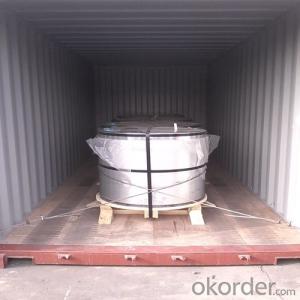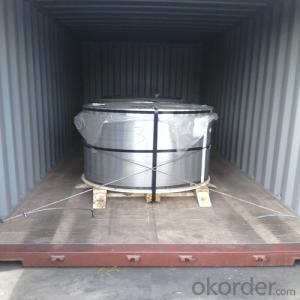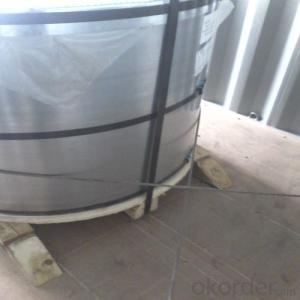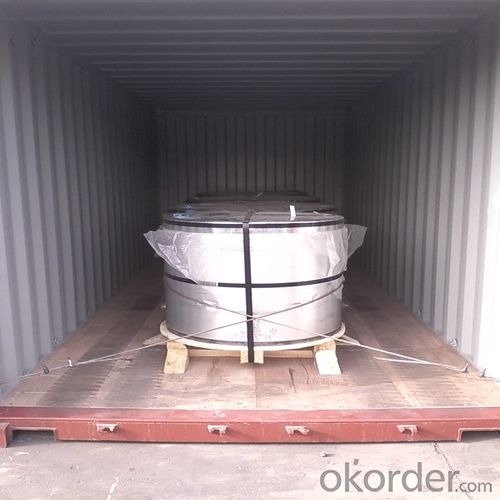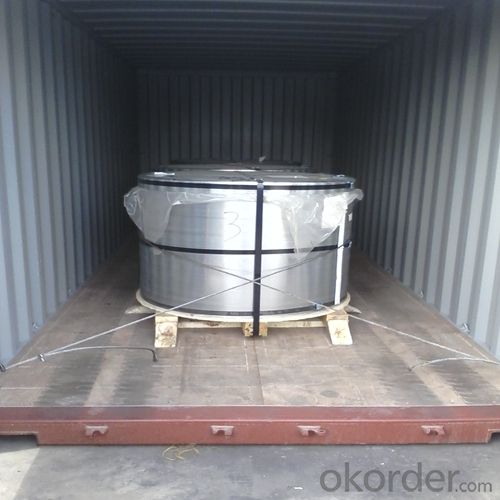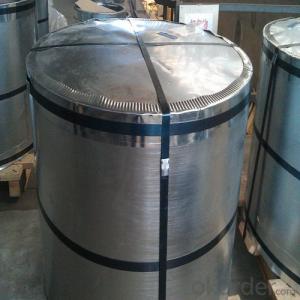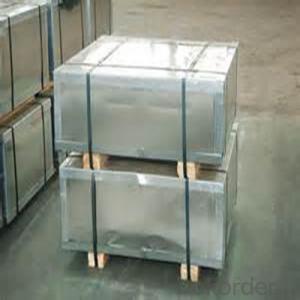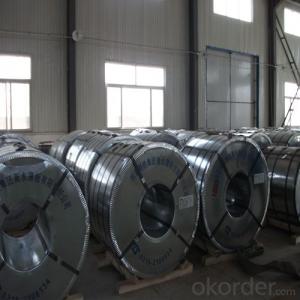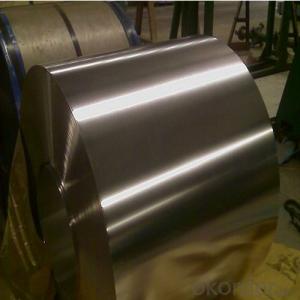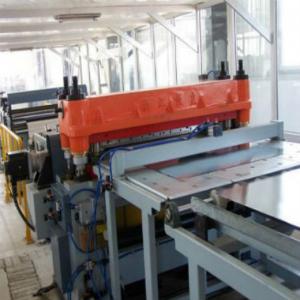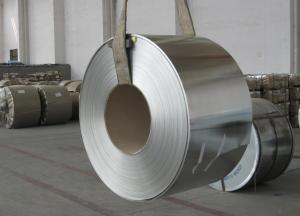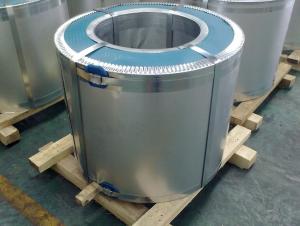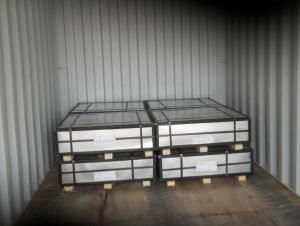Electrolytic Tinplate of High Quality for Metal Container
- Loading Port:
- Shanghai
- Payment Terms:
- TT OR LC
- Min Order Qty:
- 25 m.t.
- Supply Capability:
- 15000 m.t./month
OKorder Service Pledge
OKorder Financial Service
You Might Also Like
1.Structure of Electrolytic Tinplate of High Quality for Metal Container Description
Tinplate is a thin steel sheet coated by tin. It has an extremely beautiful metallic luster as well as excellent properties in corrosion resistance, solder ability, and weld ability.Its applications are not limited to containers; recently, tinplate has also been used for making electrical machinery parts and many other products.
2.Main Features of the Electrolytic Tinplate of High Quality for Metal Container :
Electrolytic Tinplate undoubtedly enjoys the pride of place as a packaging medium especially for food. It owes its unique position to its "nine layer sandwich structure", each of which contributes to its eminence as a packing material. The steel base of electrolytic tinplate provides the necessary strength and formability for can fabrication. The tin-iron alloy layer provides the bond between the steel and free tin layer. The free tin layer is not only responsible for the attractive bright finish and ease of solderability but is also non-toxic- a factor of vital importance in food packaging!
3.Electrolytic Tinplate of High Quality for Metal Containern Images:
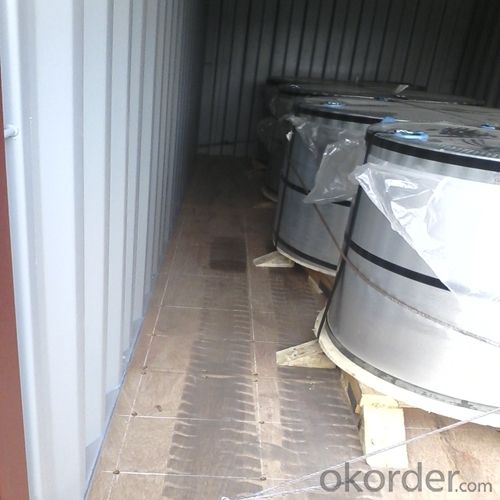
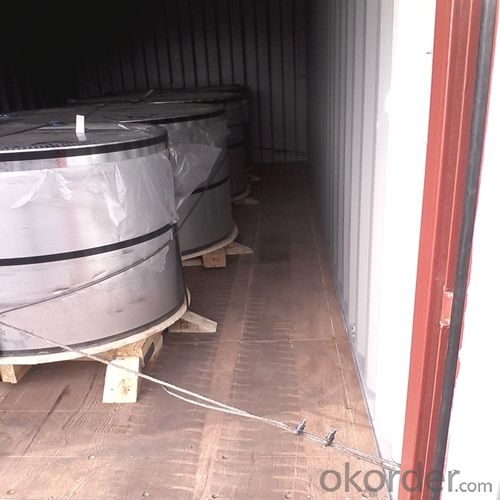
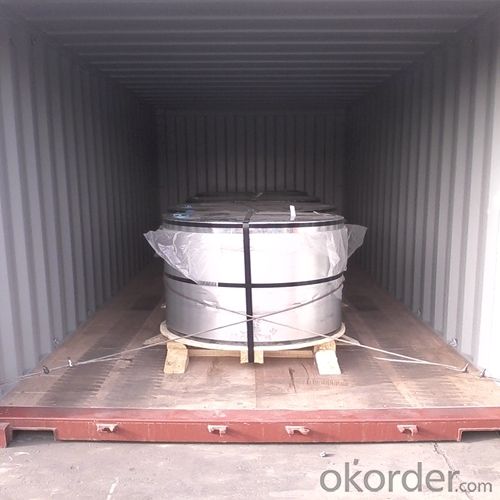
4.Electrolytic Tinplate of High Quality for Metal Container Specification
Standard: ISO 11949 -1995, GB/T2520-2000,JIS G3303,ASTM A623, BS EN 10202
Material: MR,SPCC
Thickness:0.15mm - 0.50mm
Width: 600mm -1150mm
Temper: T1-T5
Annealing: BA & CA
Coil Inner Diameter: 508mm
Weight: 6-10 tons/coil 1~1.7 tons/sheets bundle
Passivation:311
Oil: DOS
Surface: Finish,bright,stone,matte,silver
5.FAQ of Electrolytic Tinplate of High Quality for Metal Container
1. What is the delivery time for your prime quality tinplate?
Usually 35 days after order confirmation.
2. What is your Minimum Order Quantity?
Usually MOQ is 50tons for one single size, for trial order, it can be 25 tons.
3. What is the payment term?
The most common we use is L/C at sight or TT. We can also try use other terms.
- Q: How does tinplate contribute to the reduction of food waste?
- Tinplate contributes to the reduction of food waste by providing a highly protective and durable packaging material for various food products. Its corrosion-resistant properties and ability to maintain food freshness for extended periods help to prevent spoilage and extend shelf life. Additionally, tinplate's ability to be easily recycled promotes sustainable packaging practices, reducing environmental impact and further supporting efforts to minimize food waste.
- Q: What is the difference between Maguchi Tetsu tinplate and galvanized board
- Zinc plating on the surface of thin steel plates and steel strips by continuous hot dip plating prevents corrosion of the surface of thin steel plates and steel strips. Galvanized steel sheet and steel strip are widely used in machinery, light industry, construction, transportation, chemical industry, post and telecommunications and other industries.
- Q: What kind of metal material is tinplate? How much is the current price per ton?
- Tinplate originated in Bohemia (now Czech and Slovakia). The land has been rich in metal technology since ancient times, and know how to use water power in the manufacture of machinery, from fourteenth Century onwards began to produce tinplate. For a long, long time, it has been the main source of tinplate in the world. Tin was mainly used for making tableware and drinking utensils.
- Q: What are the advantages of using tinplate for aerosol cans?
- Some advantages of using tinplate for aerosol cans include its durability, corrosion resistance, and ability to maintain product quality. Tinplate cans offer a longer shelf life for aerosol products as they prevent air and moisture from entering the can, ensuring the product remains fresh and effective. Additionally, tinplate cans are lightweight, making them convenient for transportation and storage. They are also recyclable, contributing to sustainability efforts.
- Q: Are there any limitations to using tinplate packaging?
- Yes, there are several limitations to using tinplate packaging. Firstly, tinplate packaging is relatively expensive compared to other packaging materials such as plastic or cardboard. Additionally, tinplate packaging is heavier and bulkier, which can increase transportation costs. Tinplate is also more susceptible to corrosion, especially in high humidity or acidic environments. Lastly, tinplate is not as flexible as other materials, making it less suitable for certain packaging designs or shapes.
- Q: What do tinplate do?
- Material to distinguish between SR (Pu Tongcai) and DR (two rolled material)Annealing is distinguished by CA (continuous annealing), BA (bell annealing), different annealing, and different hardness. Corresponding to different processing properties.
- Q: Can tinplate be used for outdoor signage?
- Yes, tinplate can be used for outdoor signage. Tinplate is a durable and weather-resistant material, making it suitable for outdoor applications like signage. It is resistant to corrosion and can withstand various weather conditions, making it a reliable choice for long-lasting outdoor signage.
- Q: What are the main trends in tinplate recycling?
- The main trends in tinplate recycling include increased awareness and efforts towards recycling tinplate packaging, advancements in recycling technologies to improve efficiency and quality of recycled tinplate, and the growing demand for sustainable packaging solutions, leading to more emphasis on tinplate recycling.
- Q: What are the different methods of printing on tinplate?
- There are various methods used for printing on tinplate, including lithography, screen printing, and digital printing. Lithography involves transferring an image onto a metal plate, which is then inked and pressed onto the tinplate. Screen printing utilizes a mesh stencil to transfer ink onto the tinplate. Digital printing, on the other hand, involves directly printing the desired image onto the tinplate using specialized printers. These methods offer versatility and allow for the creation of high-quality designs on tinplate for various applications.
- Q: What are the different ways tinplate packaging can be decorated?
- Tinplate packaging can be decorated in various ways including printing, embossing, debossing, hot stamping, and applying labels or decals. These methods allow for customization and branding, making the packaging visually appealing and attractive to consumers.
Send your message to us
Electrolytic Tinplate of High Quality for Metal Container
- Loading Port:
- Shanghai
- Payment Terms:
- TT OR LC
- Min Order Qty:
- 25 m.t.
- Supply Capability:
- 15000 m.t./month
OKorder Service Pledge
OKorder Financial Service
Similar products
Hot products
Hot Searches
Related keywords
